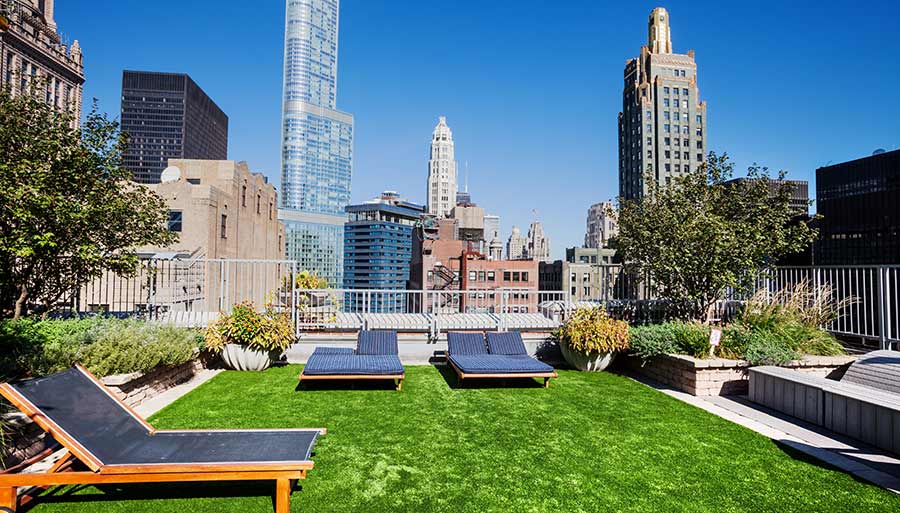Green roofs are growing like wild
Waterproofing systems for your green roof

From Chicago City Hall to Tokyo’s Imperial Hotel, green roofs are growing like wild. They’ve been well established in Europe for years, and now have taken hold in the U.S., with millions of square feet of green roofs installed.
A growing number of building owners are requesting green roofs for their commercial and residential structures, with some covered in low growth field grass or flowers and others filled with actual trees.
Increased urbanisation, increased pollution
In urban areas, there is a considerable amount of hardscape and not much ground to absorb storm water. In densely built cities, rainwater flows over streets, car parks, and roofs directly into nearby water bodies or storm drains, bringing with it numerous pollutants such as fertilizers, animal waste, and yard waste.
Why architects and building owners like green roofing
These roofs offer many cost advantages as well as helping to reduce pollution. Green roofing can…
- Reduce runoff. The greenery on the roof absorbs rainwater, reducing stress on the city’s storm water and sewer systems, which can overflow in heavy rains and cause pollution to run into nearby waterways.
- Cut energy costs. Unlike typical black asphalt roofs that absorb the sun’s rays and can become scorching hot in the summer, green roofs keep excess heat from buildings in the summer and actually provide a level of added protection from heat loss in the winter. In fact, the shade from green roofs actually can be more effective than internal insulation.
Download the SILCOR® liquid waterproofing brochure
Extending the life of the roof. Extreme temperate changes put a strain on traditional roofs. Green roofs protect against this, extending the lifespan of the roof. Green roofs can more than double the number of years required before a roof needs to be replaced, compared with conventional roofs.
Creating a green roof
Green roofs or eco-roofs include a waterproofing barrier to protect the roof, a lightweight type of soil, some type of plant matter, and a drainage layer to collect and then direct runoff from the roof.
Waterproofing your green roof
It is especially critical to waterproof green roofs. Unlike normal exposed roofs that are dry at least some of the time, green roofs may be permanently wet due to the necessary irrigation systems. Green roofs require high quality waterproofing that is root resistant.
Often architects specify liquid waterproofing for these types of applications. Years ago, liquid waterproofing work had to be done by applying heat, but today there are cold-applied waterproofing solutions that are safer to use. Look for options that have fast curing time, are very durable and are resistant to puncture, as well as roots, chemicals, moisture, fungus and micro-organisms). You can assess durability by inquiring about the product’s:
- Tensile strength—The force required to break the specimen or cause complete separation of constituents in a linear direction, to handle the physical and temperature movement
- Shore A hardness—A measure of the hardness of a given material or how resistant it will be to permanent indentation
- Elongation—The distance the membrane will stretch from its original size to the point at which it breaks
The waterproofing is spray or hand applied below the insulation layer. This way it can bond tightly to the underlying structure to prevent water infiltration. Once it cures, it becomes one flexible membrane that is seamless, to help keep it safe from leaks. This seamless membrane becomes an all-in-one waterproofing layer and root barrier. This unique ability saves time and makes for a higher quality installation vs. systems requiring a dedicated root barrier.
標籤 (Tags)
- Silcor®
- Waterproofing
